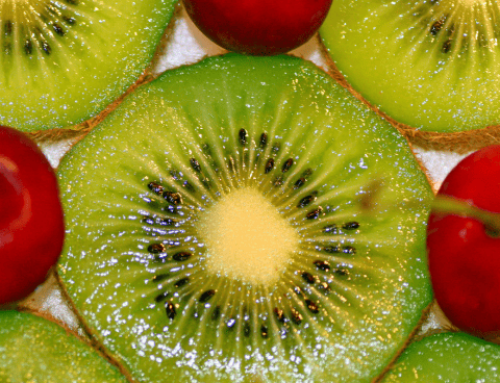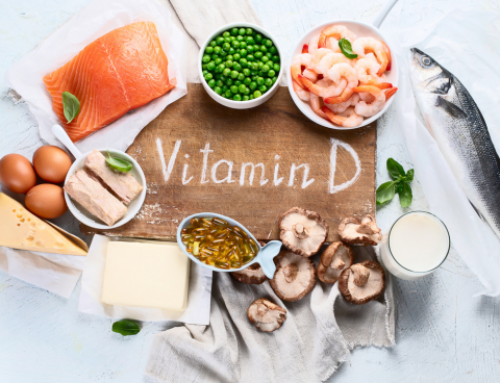I Eat Salads Every Day But I Still Can’t Lose Weight. Why?
“All I eat are salads, but I can’t lose weight!”
Sound familiar? It should, as thousands—if not millions—of Americans are currently frustrated with their efforts to shed unwanted pounds. To many of them, a salad represents the pinnacle of a healthy meal. The equation is simple: eat more salads, lose weight.
However, automatically assuming all types of a certain dish are nutritious is one of the most common mistakes committed by wannabe weight-shedders. While many salads are quite nutritious and can help keep you satiated, happy and energized, they are not all created equal. Researchers have found that American consumers are quite bad at estimating the calorie count of many restaurant salads.
In many people’s eyes, salads are universally healthy. They reason that if they grab a salad for lunch or dinner, it’s a far better choice than picking up a burger or footlong. This is not necessarily true.
Restaurant salads are notoriously deceiving. While many of them are legitimately wonderful options, many others are no better than traditional fast food.
Say you hit Chipotle for lunch. Since you’re trying to lose weight, you order a salad. All that means at Chipotle is you start with a bed of romaine lettuce instead of, say, a tortilla.
To this bed of lettuce, you add chicken, black beans, fajita veggies, corn, cheese, tomato salsa and Chipotle Honey Vinaigrette. To many people, this sounds reasonably healthy. Yet this salad packs 770 calories, just 10 fewer than you’d get from downing two McDonald’s McDoubles.
And get this—the salad actually has about 900mg more sodium and 7 more grams of sugar than the two McDoubles. It does contain a bit more protein and a bit less saturated fat than the burgers, but the point remains. A salad isn’t healthy just because it’s a “salad.”
Although many of the ingredients in the aforementioned Chipotle salad are quite healthy (black beans are a phenomenal food for weight loss, for example), 220 of its calories come from the vinaigrette. This gets to a major issue plaguing many restaurant salads—the dressings are often landmines of calories, sugar and unhealthy fat.
Chipotle’s Chipotle Honey Vinaigrette contains 12 grams of added sugar—more than you’d get from a fun-size pack of Skittles. You wouldn’t pour a handful of Skittles on your salad, but that’s exactly what you’re doing nutritionally with many restaurant dressings.
A lot of times, restaurant menus will list calorie counts for salads without dressing, leaving it up to the consumers to identify the nutrition facts for their particular dressing and then do the math. This can make it really easy to underestimate your calorie intake.
Just look at the signature dressing at another popular lunch spot—Chik-Fil-A.
A Cobb Salad with Grilled Nuggets sounds and looks quite lean. Lettuce, grilled chicken, hardboiled eggs, peppers, tomatoes—all healthy foods relatively low in calories. And indeed, prior to any dressing being applied, the salad contains only 400 calories. But empty a packet of Avocado Lime Ranch Dressing on it, and you just added an additional 310 calories and 5 grams of saturated fat to your meal.
Had you gone with the Light Italian Dressing, you’d have added just 25 additional calories. That’s a difference of 285 calories, and when the general recommendation for cutting calories for weight loss is reducing your daily caloric intake by about 500-600 calories per day, that’s a massive difference. It’s also one many people are completely oblivious to.
You can get healthy salads at both Chipotle and Chik-Fil-A, of course, but one wrong decision can significantly change the nutrition of your meal. And we haven’t even gotten to the really junky salads—for example, a full Waldorf Chicken Salad with Dijon Balsmaic Vinaigrette from California Pizza Kitchen.
Said salad contains a monstrous 1,320 calories, 94 grams of fat and 55 grams of sugar. You’re honestly better off eating the Garlic Cream Fettuccine or an entire Original BBQ Chicken hand-tossed pizza from the same place.
Or how about the the Chinese Chicken Salad at The Cheesecake Factory? That’ll be 1,740 calories, 106 grams of fat and 62 grams of sugar. Down two slices of their Original Cheesecake instead and you’d actually save yourself 80 calories.
This isn’t to say every restaurant salad is a nutritional nightmare—far from it. The Seared Tuna Tataki Salad at The Cheesecake Factory, for example, contains 490 calories and a robust 42 grams of protein.
But just because you ate a salad does not mean you ate healthy. Your body doesn’t classify a salad as a salad. It simply breaks whatever dish you consume down to its components. Don’t overlook toppings or dressings as insignificant. They can quite literally make or break the nutrition of your salad. Go grilled proteins instead of fried. Try to stick with crunchy veggies instead of wonton strips. Go fresh fruit over dried. Look for regular nuts rather than candied.
At the least, consider scaling back the amount of salad dressing you utilize when the dressing in question is particularly rich.
It’s unwise to declare any one type of dish as healthy, just as it is to demonize any one type as unhealthy. You can make healthy French toast just as you can make an unhealthy salad. Eating “salads” doesn’t automatically make you healthy. It’s about the quality and the proportion of the individual ingredients you consume day after day, week after week.
As outlined in this article, one of the best pieces of nutrition advice may be to simply eat “as little or no added sugar, if possible, as little or no refined grain, if possible, and as many vegetables as you can.” Find healthy ways to enjoy the foods you like—and learn to exercise some restraint when necessary—and you hold the key to achieving a sustainable healthy weight.
If you find yourself eating nothing but legitimately low-calorie salads and other very lean options yet you still cannot lose weight, read this.
Photo Credit: Juanmonino/iStock
READ MORE:
RECOMMENDED FOR YOU
I Eat Salads Every Day But I Still Can’t Lose Weight. Why?
“All I eat are salads, but I can’t lose weight!”
Sound familiar? It should, as thousands—if not millions—of Americans are currently frustrated with their efforts to shed unwanted pounds. To many of them, a salad represents the pinnacle of a healthy meal. The equation is simple: eat more salads, lose weight.
However, automatically assuming all types of a certain dish are nutritious is one of the most common mistakes committed by wannabe weight-shedders. While many salads are quite nutritious and can help keep you satiated, happy and energized, they are not all created equal. Researchers have found that American consumers are quite bad at estimating the calorie count of many restaurant salads.
In many people’s eyes, salads are universally healthy. They reason that if they grab a salad for lunch or dinner, it’s a far better choice than picking up a burger or footlong. This is not necessarily true.
Restaurant salads are notoriously deceiving. While many of them are legitimately wonderful options, many others are no better than traditional fast food.
Say you hit Chipotle for lunch. Since you’re trying to lose weight, you order a salad. All that means at Chipotle is you start with a bed of romaine lettuce instead of, say, a tortilla.
To this bed of lettuce, you add chicken, black beans, fajita veggies, corn, cheese, tomato salsa and Chipotle Honey Vinaigrette. To many people, this sounds reasonably healthy. Yet this salad packs 770 calories, just 10 fewer than you’d get from downing two McDonald’s McDoubles.
And get this—the salad actually has about 900mg more sodium and 7 more grams of sugar than the two McDoubles. It does contain a bit more protein and a bit less saturated fat than the burgers, but the point remains. A salad isn’t healthy just because it’s a “salad.”
Although many of the ingredients in the aforementioned Chipotle salad are quite healthy (black beans are a phenomenal food for weight loss, for example), 220 of its calories come from the vinaigrette. This gets to a major issue plaguing many restaurant salads—the dressings are often landmines of calories, sugar and unhealthy fat.
Chipotle’s Chipotle Honey Vinaigrette contains 12 grams of added sugar—more than you’d get from a fun-size pack of Skittles. You wouldn’t pour a handful of Skittles on your salad, but that’s exactly what you’re doing nutritionally with many restaurant dressings.
A lot of times, restaurant menus will list calorie counts for salads without dressing, leaving it up to the consumers to identify the nutrition facts for their particular dressing and then do the math. This can make it really easy to underestimate your calorie intake.
Just look at the signature dressing at another popular lunch spot—Chik-Fil-A.
A Cobb Salad with Grilled Nuggets sounds and looks quite lean. Lettuce, grilled chicken, hardboiled eggs, peppers, tomatoes—all healthy foods relatively low in calories. And indeed, prior to any dressing being applied, the salad contains only 400 calories. But empty a packet of Avocado Lime Ranch Dressing on it, and you just added an additional 310 calories and 5 grams of saturated fat to your meal.
Had you gone with the Light Italian Dressing, you’d have added just 25 additional calories. That’s a difference of 285 calories, and when the general recommendation for cutting calories for weight loss is reducing your daily caloric intake by about 500-600 calories per day, that’s a massive difference. It’s also one many people are completely oblivious to.
You can get healthy salads at both Chipotle and Chik-Fil-A, of course, but one wrong decision can significantly change the nutrition of your meal. And we haven’t even gotten to the really junky salads—for example, a full Waldorf Chicken Salad with Dijon Balsmaic Vinaigrette from California Pizza Kitchen.
Said salad contains a monstrous 1,320 calories, 94 grams of fat and 55 grams of sugar. You’re honestly better off eating the Garlic Cream Fettuccine or an entire Original BBQ Chicken hand-tossed pizza from the same place.
Or how about the the Chinese Chicken Salad at The Cheesecake Factory? That’ll be 1,740 calories, 106 grams of fat and 62 grams of sugar. Down two slices of their Original Cheesecake instead and you’d actually save yourself 80 calories.
This isn’t to say every restaurant salad is a nutritional nightmare—far from it. The Seared Tuna Tataki Salad at The Cheesecake Factory, for example, contains 490 calories and a robust 42 grams of protein.
But just because you ate a salad does not mean you ate healthy. Your body doesn’t classify a salad as a salad. It simply breaks whatever dish you consume down to its components. Don’t overlook toppings or dressings as insignificant. They can quite literally make or break the nutrition of your salad. Go grilled proteins instead of fried. Try to stick with crunchy veggies instead of wonton strips. Go fresh fruit over dried. Look for regular nuts rather than candied.
At the least, consider scaling back the amount of salad dressing you utilize when the dressing in question is particularly rich.
It’s unwise to declare any one type of dish as healthy, just as it is to demonize any one type as unhealthy. You can make healthy French toast just as you can make an unhealthy salad. Eating “salads” doesn’t automatically make you healthy. It’s about the quality and the proportion of the individual ingredients you consume day after day, week after week.
As outlined in this article, one of the best pieces of nutrition advice may be to simply eat “as little or no added sugar, if possible, as little or no refined grain, if possible, and as many vegetables as you can.” Find healthy ways to enjoy the foods you like—and learn to exercise some restraint when necessary—and you hold the key to achieving a sustainable healthy weight.
If you find yourself eating nothing but legitimately low-calorie salads and other very lean options yet you still cannot lose weight, read this.
Photo Credit: Juanmonino/iStock
READ MORE:










